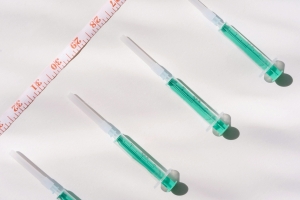Effects of Reducing or Ceasing Alcohol Consumption on Cancer Risk
In 2020, it was estimated that 741,300 new cancer cases worldwide were caused by alcohol consumption. This represents 4.1% of all new cancer cases, with 6.1% among men and 2.0% among women (1).
An independent group of international experts convened by the International Agency for Research on Cancer (IARC) reviewed the existing literature to assess the effectiveness of reducing or stopping alcohol consumption in decreasing the risk of alcohol-related cancers, such as cancers of the oral cavity, pharynx, larynx, esophagus, colorectal area, liver, and female breast. Additionally, the group identified and evaluated the mechanisms of alcohol-induced carcinogenesis that may be reversed with cessation of consumption (2).
The IARC classifies alcoholic beverages, ethanol in these beverages, and acetaldehyde associated with alcohol consumption as carcinogens for humans. In addition to ethanol and acetaldehyde, alcoholic beverages may contain various toxins derived from raw materials used or that may arise during the production process.
There are several mechanisms linking alcohol to cancer, one of the most well-understood scientifically being genotoxicity, where acetaldehyde causes damage to our DNA, such as breaks and structural changes. These alterations can lead to errors in DNA replication, resulting in mutations. Over time, these mutations can accumulate and lead to cancer development, especially in parts of the body that come into direct contact with alcohol, such as the mouth, throat, and esophagus (2).
An important measure used is the Population Attributable Fraction (PAF), which helps understand how many cancer cases can be attributed to alcohol consumption in a population. To calculate PAF, researchers use data on: how much people drink; the cancer risk associated with alcohol; how many cancer cases exist. However, there are limitations, such as incomplete data, underreporting of alcohol consumption, other factors affecting the data (like smoking), and population differences. Despite these limitations, PAF is useful for understanding and preventing alcohol-related cancers.
CISA, in its annual report “Alcohol and Brazilian Health,” uses these fractions to calculate the burden of alcoholic beverages on the Brazilian population. To learn more, download the report for free on our website.
According to the study conducted by the IARC, reducing or ceasing alcohol consumption is associated with a lower risk of oral and esophageal cancers, with sufficient evidence to support this conclusion. There is limited evidence suggesting a reduction in the risk of laryngeal, colorectal, and breast cancers with the cessation of alcohol consumption. However, there is inadequate evidence to indicate that reducing or ceasing alcohol consumption lowers the risk of pharyngeal and liver cancers. Overall, researchers conclude that stopping alcohol consumption may be beneficial for reducing the risks of certain types of cancer, but the strength of the evidence varies among different cancer types.
References:
- Rumgay, H., Shield, K., Charvat, H., Ferrari, P., Sornpaisarn, B., Obot, I., Islami, F., Lemmens, V. E. P. P., Rehm, J., & Soerjomataram, I. (2021). Global burden of cancer in 2020 attributable to alcohol consumption: a population-based study. The Lancet. Oncology, 22(8), 1071–1080. https://doi.org/10.1016/S1470-2045(21)00279-5
- International Agency For Research On Cancer. IARC Handbooks of Cancer Prevention: volume 20A - Reduction or cessation of alcoholic beverage consumption. Lyon: IARC, 2024
"Know Your Numbers": An Approach to Reduce Heavy Alcohol Consumption in Young Adults
Janeiro 23, 2025"Know Your Numbers": An Approach to Reduce Heavy Alcohol Consumption in Young Adults
A recent study highlights that, although the "Know Your Numbers" (KYN) model has the potential to raise awareness about alcohol consumption, more prolonged and robust interventions are necessary to significantly impact young adults.
Harmful alcohol consumption, such as binge drinking, is a common issue among young adults, and current interventions like individual therapeutic programs, brief interventions, and modifying expectations regarding alcohol use have shown positive, albeit modest, effects. In general, research on current interventions suggests that there is little significant long-term behavioral change.
A promising alternative is the "Know Your Numbers" (KYN) model, successfully used to modify risk behaviors in campaigns related to cardiovascular diseases, such as American Heart Association´s campaigns. In this model, providing quantitative feedback, such as cholesterol levels, has been shown to be effective in raising awareness. However, no study has yet combined the KYN model with alcohol biomarkers (such as PEth—a blood biomarker for alcohol consumption, known as phosphatidylethanol) and AUDIT (Alcohol Use Disorders Identification Test) scores to create a quantitative risk indicator related to alcohol consumption.
A recent study evaluated the feasibility, acceptability, and preliminary effectiveness of a four-week intervention based on the KYN model to motivate young adults to reduce dangerous levels of alcohol consumption. The main hypothesis proposed that awareness of AUDIT values and PEth levels would encourage positive behavioral changes. The goals included evaluating recruitment and retention strategies, examining the impact of the intervention on motivation for change, and measuring its preliminary effectiveness in reducing alcohol consumption. Additionally, the study aimed to analyze the acceptability of the KYN approach through focus groups (sessions where participants discuss their experiences with the intervention to provide qualitative feedback), which also offered suggestions for improvement.
Ninety-four young adults aged 18 to 30 who reported binge drinking in the past month were recruited. Participants with specific conditions, such as psychiatric treatment, a history of substance dependence, pregnancy, BMI over 30, or seizure disorders, were excluded. Overall, the strategy was effective, with 82.26% of individuals recruited and 76.9% retained after four weeks.
During the intervention, participants received personalized feedback based on PEth levels and AUDIT scores. A subgroup participated in reinforcement sessions after two weeks, and focus groups were held at the end to evaluate the experience. Motivation for change was measured by the Alcohol Contemplation Ladder, which showed a significant 62% increase (p < 0.001) from the beginning to the end of the intervention. However, despite this, many participants still showed indecision about changing behaviors. There was also a significant reduction in AUDIT scores, with 61% of participants reducing at least one point. Furthermore, the proportion of drinkers classified as "low risk" increased from 18% to 33%. However, there were no significant changes in average PEth levels, although 38% of participants reduced their consumption levels. Additionally, the frequency and intensity of binge drinking episodes remained unchanged.
Focus groups identified three main themes: satisfaction with the quantitative model, the need for more information about the risks associated with alcohol consumption, and a desire for a better understanding of PEth levels and their relationship to behavior. These results highlight the acceptance of the KYN model, which was considered feasible and met recruitment and retention goals. However, objective outcomes, such as reductions in binge drinking and changes in biomarkers, were limited. Factors such as the short duration of the intervention, seasonality, and participants' difficulty in understanding biometric data may have influenced the results, according to the article.
In conclusion, the KYN approach showed promise in raising awareness about alcohol consumption among young adults. It is important to note that longer and more robust interventions are necessary to achieve a greater impact on biomarkers and reduce binge drinking. The study authors recommend conducting randomized studies lasting 6 to 8 weeks and using technologies like real-time tracking apps, in addition to integrating behavioral strategies, such as goal setting and personalized reminders. They also emphasize that translating biometric data into practical and accessible actions is essential to increase the effectiveness of this approach for the young adult population.
References:
Piano, M. R., Hwang, C.-L., Adair, M., Muhimpundu, S., Dietrich, M. S., & Phillips, S. A. (2024). A pilot study of a quantitative approach to reduce binge drinking in young adults: Know your numbers. Journal of Studies on Alcohol and Drugs, 85(6), 788–793.
Dry January: Learn How to Reduce Alcohol Consumption
Janeiro 23, 2025Dry January: Learn How to Reduce Alcohol Consumption
A campaign launched in the United Kingdom, Dry January, which encourages a month without alcohol, can motivate the adoption of healthier habits.
Year-end celebrations are often accompanied by champagne and followed by hangovers in the days after. In addition to excessive alcohol, it’s also common to overindulge in fatty and sugary foods during this time, which increases health risks and causes many people to start the year not feeling their best. Therefore, January can be a great time to set new goals and objectives for a healthier lifestyle, which may include temporarily stopping alcohol consumption.
The challenge of Dry January is simple: stay sober for all 31 days of the month. Although it is a short period, this change can bring health benefits, especially after the excesses of the holidays.
Main Benefits
Taking a break from alcohol can bring numerous physical and mental benefits, such as better sleep quality, clearer skin, and more energy throughout the day.
These benefits will depend on how much and how often a person drinks. If a person regularly drinks large amounts, a sudden change may cause irritation before they start feeling better. For those who drink less, the benefit is more immediate, with increased energy and improved mood after a few days of sobriety.
Additionally, the break can help with weight loss, reduce blood pressure, and improve liver function.
Challenges
It is increasingly common for people to decide to take periodic breaks from alcohol consumption. These pauses can be important for individuals to assess the role alcohol plays in their lives and make changes if they find their relationship with the substance is unhealthy. However, the break is useless if it is followed by excessive drinking afterward. Some people think that because they went a month without drinking, they can drink as much as they want afterward. This will undo the benefits they achieved. Therefore, maintaining healthy behavior over time is more difficult than the short break itself. For this, more than a month without drinking, discipline, commitment, and willpower are required.
Changing habits abruptly, especially if alcohol consumption is part of one’s routine, is not easy. To support this process, CISA highlights five tips that can make a difference:
- If you’ve decided it’s time to reduce or stop drinking, don’t delay. Set a date and start.
- Share your intention to reduce or stop drinking. This can motivate your family and friends to support you.
- Stay away from places that remind you of alcohol or trigger cravings to drink, such as bars, liquor stores, or the alcohol section of a supermarket. It’s also useful to avoid having alcohol at home.
- Fill your free time with hobbies and activities that don’t involve alcohol.
- Remember that adopting other healthy habits will also help in this process: try to eat well, get a good night’s sleep, exercise, and drink water.
The difficulty in reducing or stopping alcohol consumption will depend on an individual’s personal characteristics, how much they typically drink, and whether they already experience emotional, physical, or interpersonal complications from alcohol use. If difficulties arise during this process, seeking help from a trusted healthcare professional for a detailed assessment is recommended.
American Research Suggests Semaglutide May Help Reduce Alcohol Cravings and Consumption
Março 27, 2025American Research Suggests Semaglutide May Help Reduce Alcohol Cravings and Consumption
A recent clinical trial conducted in the United States investigated the impact of semaglutide, a medication used to treat diabetes and obesity, on reducing alcohol consumption. The findings suggest that the use of this medication may help decrease both the craving for and the amount of alcohol consumed, opening new perspectives for the treatment of alcohol use disorder (AUD).
A new study (1) published in JAMA Psychiatry suggests that semaglutide, a drug originally developed for diabetes and obesity, may also have a positive impact on reducing alcohol consumption. The study was a phase 2 randomized clinical trial conducted in the United States, involving adults diagnosed with alcohol use disorder (AUD). The results showed that weekly doses of semaglutide helped reduce alcohol consumption and the craving for alcoholic beverages.
The study included 48 participants who were not seeking treatment for AUD. They were divided into two groups: one receiving semaglutide and the other a placebo. After nine weeks of treatment, participants who used semaglutide consumed significantly less alcohol than those in the placebo group. The study also showed a reduction in binge drinking episodes and a decrease in the desire to drink.
How Can Semaglutide Influence Alcohol Consumption?
Semaglutide belongs to a class of medications known as glucagon-like peptide-1 receptor agonists (GLP-1RAs), which affect appetite regulation and the brain's reward system. Preclinical studies had already suggested that GLP-1RAs could influence alcohol consumption behavior by reducing the pleasure associated with drinking.
In the clinical study, participants treated with semaglutide consumed less alcohol when subjected to a laboratory test of self-administration of alcoholic beverages. The researchers also noted that semaglutide did not directly affect the number of days participants drank, but it reduced the amount consumed per drinking day.
Possible Clinical Implications
Although the results are promising, the authors highlight that larger studies are needed to confirm the findings and assess the safety of long-term use of semaglutide for treating AUD. Currently, less than 10% of individuals with alcohol use disorder receive pharmacological treatment. If its effectiveness is confirmed, semaglutide could become a new option for people who want to reduce alcohol consumption without completely abstaining.
What Does This Mean for Those Who Want to Reduce Alcohol Consumption?
If you are concerned about your alcohol consumption pattern, it is important to speak with a healthcare professional before considering any medication. The study suggests that semaglutide may help reduce alcohol consumption, but it is not a universal solution. Other approaches, such as cognitive-behavioral therapy and social support, remain essential for managing AUD.
With more research, semaglutide may represent an innovative therapeutic option in the future. For now, the best strategy for maintaining balanced alcohol consumption remains self-awareness, moderation, and professional support.
References:
- Hendershot CS, Bremmer MP, Paladino MB, et al. Once-Weekly Semaglutide in Adults With Alcohol Use Disorder: A Randomized Clinical Trial. JAMA Psychiatry. 2025. doi:10.1001/jamapsychiatry.2024.4789.





